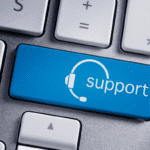
If your calendar doesn't mark January 28th as Data Privacy Day this Sunday, it's crucial to be aware. Recognising the significance of it is one aspect, but actively identifying potential privacy weaknesses and outlining actionable solutions is a different matter altogether.
Data privacy protects personal and sensitive data gathered, processed, stored, and shared digitally. It revolves around the right of individuals to have control over how their data is used by organisations, governments, or other entities.
Data privacy protects people's personal information by respecting their choices, keeping it confidential, and preventing unwarranted use or access.
There has never been this much data that exists now; only more will be created. It has been found that 54% of consumers say they would be willing to share their personal data to help improve AI products and decision-making. This means over half of consumers would give their information to better respond to AI.
With it seeming to be much easier to offer personal information, keeping private data safe is easier said than done in the digital age. With that said, here are some pointers that could help you and your business protect its sensitive information.
This proactive measure is essential for quickly detecting and addressing strange activities on your system logins or devices. Doing this allows you to block and change access and passwords to prevent breaches from reoccurring.
Encryption is like a secret code for your data, making it unreadable to anyone without the 'key.' This is crucial when data is sent over the internet and stored on your devices or servers.
Strong encryption methods and secure key management are essential for keeping your data private. Data encryption makes information unreadable to unknown individuals. This means that even if someone discovers your storage, they will be unable to access your private information.
Two-factor authentication (2FA) and Multi-Factor Authentication (MFA) force users to present various types of identification before gaining entry to their accounts or data.
This may include a password, something they possess (such as a phone or token), or something that uniquely identifies them (like a fingerprint or facial recognition). Doing this puts an extra layer between your data and those trying to steal or replicate it.
Enforce stringent access regulations to restrict access to and alterations of sensitive data. Using Role-Based Access Control (RBAC) and the principle of least privilege ensures that only approved individuals can access specific data resources. This involves carefully limiting access to data.
Doing so shields data by ensuring only individuals with the correct permissions can interact. This reduces the chance of data breaches.

Perform routine security assessments and penetration tests to uncover vulnerabilities within your systems and applications. This proactive strategy allows you to rectify weaknesses before they become susceptible to exploitation.
Consistently evaluating your system's security through assessments and conducting simulated cyberattacks, known as penetration tests, helps pinpoint weaknesses. This ongoing practice enables you to detect and resolve issues before malicious actors leverage them.
Collect and retain only the data essential for your operations. Avoid unnecessary data accumulation, as it could cause potential harm and will also ensure compliance with principles such as GDPR's data minimisation.
By limiting the data you maintain, you naturally decrease the potential consequences of breaches and ensure that you only retain data for valid and necessary purposes.
When data is no longer needed anymore, get rid of it safely. This means deleting files securely, wiping data from devices, and following proper procedures to dispose of physical media.
If you don't dispose of data securely, it could be accessed by people who should not have access, putting you at risk of potential breaches.
Keep all your software, including operating systems, apps, and security tools, up to date with the latest patches. These updates fix known vulnerabilities that attackers might use.
Hackers frequently target these weaknesses in older software. Regularly updating your operating systems, apps, and security patches reduces the risk of being targeted by hackers.
Consider data privacy right from the beginning when creating products, services, and systems. Include privacy features from the start instead of trying to add them later on. This means privacy is a fundamental part of data processing, not something added as an afterthought.
Data protection requires constant attention. Keep evaluating and adjusting your security measures to stay resilient against new threats and apply lessons from past incidents. By continually enhancing your security, you can stay ahead of emerging risks.
Data privacy is essential to protecting personal and sensitive information in the digital era. It involves individuals' authority over their data, determining how organisations, governments, and entities gather, utilize, store, and share it
We hope this blog has helped you understand data privacy more thoroughly, especially on data privacy day. If you want to learn more about security, please visit our security page.




